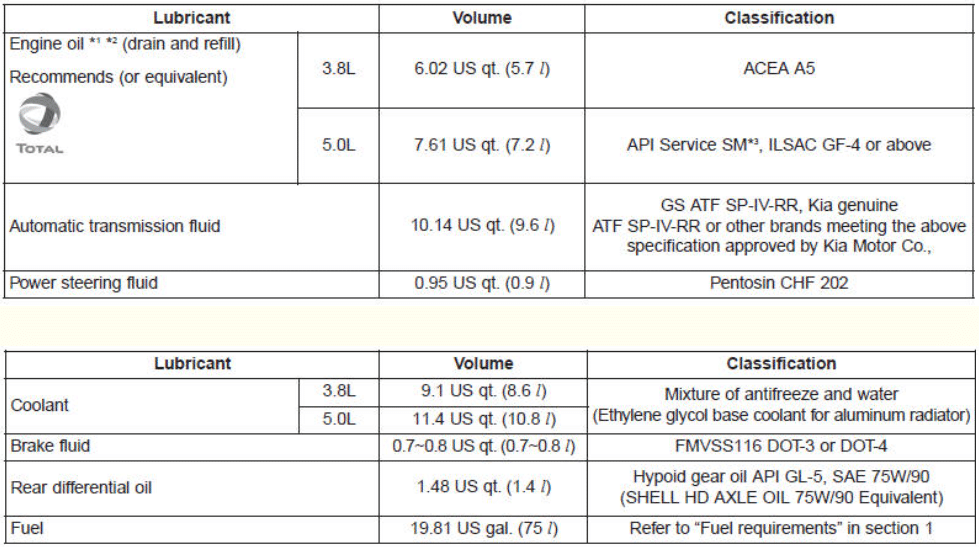The Kia K900, known for its luxury, comfort, and performance, boasts a highly sophisticated transmission system. This flagship sedan from Kia primarily uses an eight-speed automatic transmission, designed to provide smooth and efficient gear shifting, thereby ensuring an optimal driving experience.
The transmission system of a car is a complex assembly of parts working together to transfer the engine’s power to the wheels. At the heart of this system is the transmission fluid, a crucial component that lubricates, cools, cleans, and protects the internal parts.

Maintaining the correct type and quantity of transmission fluid in your Kia K900 is essential. It ensures that your vehicle performs at its best and also helps extend the lifespan of your transmission system. Regular checks and timely replacements can help prevent costly repairs or a complete transmission failure.
Understanding Transmission Fluid
Transmission fluid is a special kind of lubricant designed specifically for transmission systems in vehicles. This fluid plays several key roles in ensuring the smooth operation of a vehicle’s transmission. It helps to cool and lubricate the moving parts within the transmission, prevent wear and tear of gears, and facilitate smooth gear shifts. Transmission fluid also helps to maintain the pressure needed for the transmission to function properly.
Transmission fluids are not one-size-fits-all, and they come in various types, including Dexron/Mercon, Hypoid, Type F, and Continuously Variable Transmission (CVT) fluid. Each type has a unique composition designed to work optimally with different transmission designs.
Why is the Correct Fluid Type Vital?
The correct transmission fluid type is vital for the seamless operation and longevity of your vehicle’s transmission. Each type of fluid has specific properties, such as viscosity and additives, engineered to perform best with a particular transmission design.
Using the wrong type of transmission fluid may lead to ineffective lubrication, improper cooling, and inadequate cleaning, which can cause transmission parts to wear prematurely. It may also affect the quality of gear shifts, leading to a less comfortable drive.
In severe cases, the wrong fluid can cause serious damage to the transmission, leading to costly repairs or even the need for a complete transmission replacement. Thus, always ensure that you’re using the recommended transmission fluid type for your Kia K900 to maintain its performance and longevity.
Kia K900 Transmission Fluid Capacity And Transmission Fluid Type
The transmission fluid capacity is the amount of fluid your Kia K900’s transmission system can hold. This information can typically be found in your vehicle’s owner’s manual.
2015-2018 Kia K900 Transmission Fluid Capacity And Transmission Fluid Type
The typical transmission fluid capacity for these models with 8-Speed Automatic transmission is approximately 10.1 quarts (9.6 liters) for a complete overhaul. For a simple drain and refill, you’ll typically replace about 6 quarts (5.7 liters).

These models typically use SP-IV automatic transmission fluid. This is a specially designed synthetic fluid created to cater to the demands of the car’s 8-speed automatic transmission.
2019-2020 Kia K900 Transmission Fluid Capacity And Transmission Fluid Type
These models usually have a similar capacity of around 9.7 quarts (9.2 liters) for a total overhaul and about 5 quarts (4.7 liters) for a drain and refill.
The second-generation Kia K900 also primarily uses SP-IV automatic transmission fluid. This is consistent with Kia’s specification for most of their vehicles with automatic transmissions.
Always ensure to check your vehicle’s owner’s manual for the most accurate information, as there can sometimes be variations based on specific sub-models or regions.
- The exact Original Equipment Manufacturer fluid that your vehicle came with
- Designed for ideal performance
- Approved and recommended by Hyundai Motor America
- Use only the ATF specified in the vehicle owner’s manual
Consequences of Using Incorrect Fluid Type
Using the incorrect transmission fluid type can have several negative consequences on your vehicle’s performance and durability:
- Performance Issues: The wrong type of fluid may not lubricate the transmission components effectively, leading to harder shifts and decreased fuel efficiency.
- Premature Wear: If the fluid doesn’t provide sufficient protection, the transmission’s components can wear down prematurely, leading to expensive repairs.
- Transmission Damage: In severe cases, using the wrong fluid can cause significant damage to your transmission, potentially leading to a complete transmission failure, which is a costly repair.
Remember, maintaining the correct type and level of transmission fluid in your Kia K900 is an easy but important step in ensuring the vehicle’s longevity and optimal performance.
How to Check Transmission Fluid Levels
Checking the transmission fluid level in your Kia K900 is a straightforward process:
- Warm up the Vehicle: Start your car and let it run for a few minutes to warm up the transmission fluid.
- Locate the Dipstick: The transmission dipstick is typically located towards the back of the engine. It’s often labeled and/or colored differently from the oil dipstick for easy identification.
- Check the Fluid: Pull out the dipstick, wipe it clean, reinsert it fully, then pull it out again to check the fluid level. The fluid should be between the two notches or the “H” and “L” marks. If it’s below the “L” mark, you’ll need to add more fluid.
- Check the Fluid Condition: The fluid should be a clear red color and not have a burnt smell. If it’s dark or smells burnt, it might be time for a change.
Changing Transmission Fluid

When to Change Transmission Fluid
The right time to change your transmission fluid can depend on several factors, such as your driving habits, the climate in which you drive, and whether your Kia K900 has been used for towing.
However, a general rule of thumb is to replace your transmission fluid every 30,000 to 60,000 miles. Some newer synthetic fluids can last up to 100,000 miles before needing a change, but always check your owner’s manual for the manufacturer’s recommendation.
Keep in mind that if your transmission fluid appears dark, smells burnt, or if you notice particles or debris within the fluid, you should consider changing it, even if you haven’t reached the recommended mileage.
Steps to Change the Transmission Fluid in a Kia K900
Changing your transmission fluid can be a somewhat complex task that requires some mechanical knowledge and skill. If you’re not comfortable performing this service yourself, it’s always best to take your vehicle to a professional.
However, if you’re up for it, here’s a general process:
- Gather Materials: You’ll need new transmission fluid (typically SP-IV for Kia K900), a new transmission fluid filter, a drain pan, a funnel, and hand tools for removing the drain plug and pan.
- Warm up the Vehicle: Start your car and let it run for a few minutes to warm up the transmission fluid. This makes the fluid thinner and easier to drain.
- Locate and Remove the Drain Plug: With the car safely elevated, find the transmission drain plug and remove it, allowing the fluid to drain into the drain pan.
- Remove the Transmission Pan: After the fluid has drained, remove the bolts holding the transmission pan. Be careful, as there may be some fluid left in the pan.
- Replace the Filter: Replace the old transmission filter with a new one, as it can collect debris and particles over time.
- Reinstall the Pan and Drain Plug: Clean the pan and reinstall it along with a new gasket if necessary. Then, reinstall the drain plug.
- Add New Fluid: Using a funnel, add the new transmission fluid through the dipstick tube. Be sure not to overfill.
- Check Fluid Level: Start your car and let it run for a few minutes. Then, check the transmission fluid level and add more if necessary.
Remember, every car is slightly different, so this guide is a general reference. Always refer to your Kia K900’s specific owner’s manual for precise steps and requirements. For the best results and to avoid damaging your vehicle, consider seeking professional help if you’re unsure about any steps in this process.
Last update on 2025-12-22 / Affiliate links / Images from Amazon Product Advertising API

















